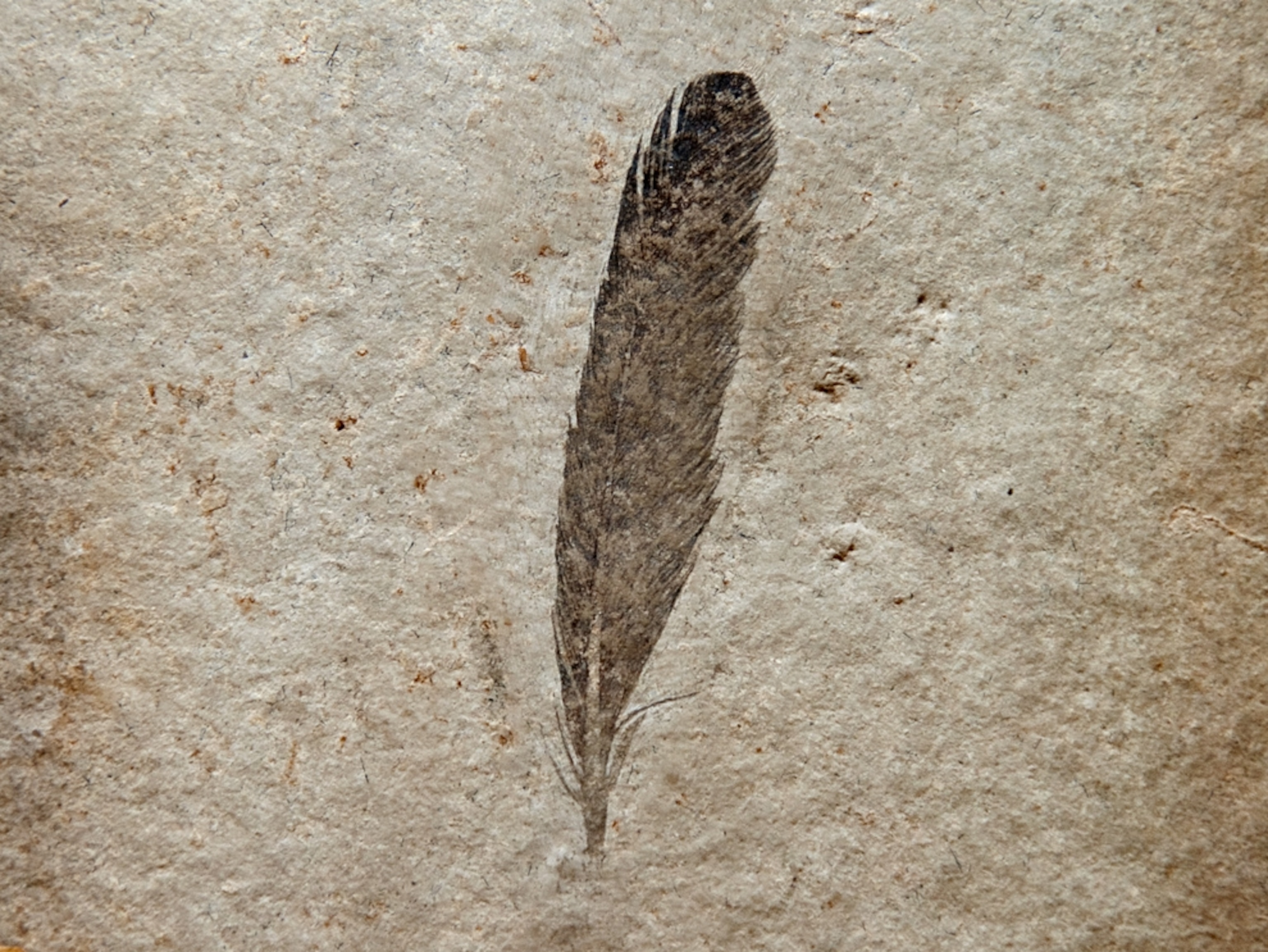
Feathered Dinosaur Had Black Wings?
Dark wings would have given Archaeopteryx a flight advantage, study says.
One of the first dinosaurs to take to the air had wings with at least one black feather, according to a new study.
To determine the color of the winged dinosaur Archaeopteryx, scientists used a scanning electron microscope to analyze a fossilized feather from one of the raven-size creatures. The fossil was discovered in a limestone deposit in Germany in 1861.
The team was surprised to discover that the microscopic structure of the ancient wing feather was identical to that of modern bird plumage.
"It means that completely modern flight feathers had evolved as early as 150 million years ago, in the Jurassic period," said study leader Ryan Carney, an evolutionary biologist at Brown University in Providence, Rhode Island.
(See "Dinosaur True Colors Revealed for First Time.")
Tracing Archaeopteryx's Colors
With the aid of the specialized microscope, Carney and his team also picked out clusters of structures called melanosomes in the feather.
(Related video: "'Missing Link' Dinosaur: Feather Color Determined.")
Melanosomes contain pigments called melanins and are responsible for a variety of functions in animals and birds, including giving hair and feathers their colors.
Melanosomes' shapes—from spherical to rod-shaped—and their arrangement in cells are associated with particular feather colors.
To determine the original color of the Archaeopteryx feather, the team compared the dinosaur's melanosomes with those in 115 modern bird feathers.
Based on the shapes and sizes of the modern melanosomes, the team concluded with 95 percent certainty that at least one of Archaeopteryx's wing feathers was black.
(See "True-Color Dinosaur Revealed: First Full-Body Rendering.")
Why Black Feathers Are Better
Hans-Dieter Sues, a paleontologist at the National Museum of Natural History in Washington, D.C., said the findings are "certainly suggestive."
"Black is a common color for bird plumage, and its occurrence in Archaeopteryx would not be unusual," said Sues, who was not involved in the study, published this week in the journal Nature Communications.
For birds, black feathers provide certain flight advantages. That's because black feathers contain more pigment-packed melanosomes than do feathers of other colors, and melanosomes can bind with keratin proteins in feathers to make them thicker, stronger, and more durable.
"Studies have found that wing feathers are the most likely feathers to be pigmented black," said Carney, who is also a National Geographic Society Waitt grantee. (The National Geographic Society owns National Geographic News.)
"And it's why even white birds will often have black tips on their wings."
Having black—and thus stronger—wing feathers could've helped Archaeopteryx as it flapped or coasted between trees.
Flight Debate Still Up in the Air
However, the new finding is unlikely to help settle the debate about whether Archaeopteryx was primarily a flier or a glider, study leader Carney said.
(Related: "Dino-Era Bird Flew With Four Wings, Study Says.")
"Whether it was using its wings for flying or gliding, its feathers would still have been strengthened by having these melanosomes," he added.
Lawrence Witmer, a paleontologist at Ohio University, agreed.
"Debates on the flight capabilities of Archaeopteryx are likely to rage for years to come," said Witmer, who also did not participate in the study.
"This new finding really doesn't have much of an impact on the debate."
The feather-color discovery does raises the possibility, however, that Archaeopteryx—which many artists have portrayed as a very colorful creature—was pretty drab.
"Personally, if I were to do a reconstruction of Archaeopteryx [based on the new results], I would make it all black," Carney said.
"But that's not something that we could say with any scientific confidence. For all we know, it could've had black wings and a white body."




